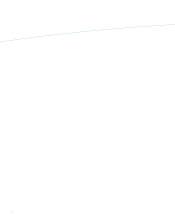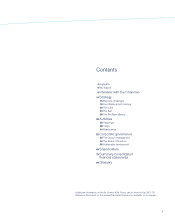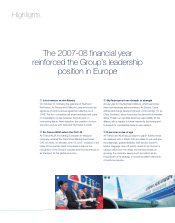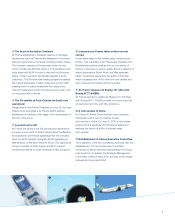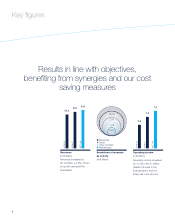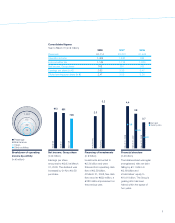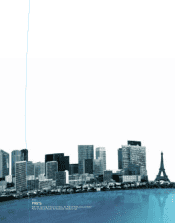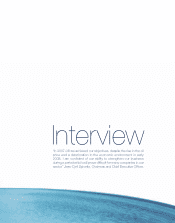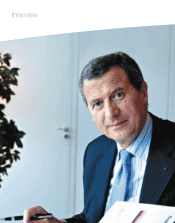Air France 2008 Annual Report Download - page 12
Download and view the complete annual report
Please find page 12 of the 2008 Air France annual report below. You can navigate through the pages in the report by either clicking on the pages listed below, or by using the keyword search tool below to find specific information within the annual report.
12
Interview
You mentioned, in this context, that major players
such as Air France-KLM will emerge stronger. Why
do you believe that Air France-KLM could further
reinforce its leadership position?
Air France-KLM has a number of structural advantages:
we have the largest route network between Europe and
the rest of the world. With us, travelers can find virtually all
the solutions for their travel needs. Furthermore, we offer
numerous long-haul destinations on which our European
competitors are not present. Finally, this network is
organized around two powerful, well-coordinated hubs.
These hubs are even more important in an environment of
capacity reductions involving, amongst other things, the
closure of direct flights on some routes. Many small and
medium-sized airlines will no longer be able to maintain
unprofitable routes, meaning their passengers will have to
travel via a hub. And the more efficient your hub, the more
attractive it will be for these passengers.
Our second competitive advantage can be summed up in
one word: balance. Our business model is balanced in
terms of markets, traffic and customers. Geographically,
because we are not overly-dependent on any specific
market, we enjoy a natural hedge against economic or
geopolitical risk. Moreover, our traffic is also equally
balanced between point-to-point and connecting traffic.
Finally, in terms of our customer base, it is almost evenly
split between business and leisure travelers.
Within the current oil price environment, the choice of
aircraft is of the utmost importance. Thanks to the
investment we have pursued for the past ten years which
remains ongoing, we have a young, modern fleet,
organized, in long-haul, around Boeing B777-200 and
300 aircraft. One figure alone sums up the importance of
this choice: a Boeing B747-400 uses 30% more jet fuel
than a Boeing B777-300. By 2012, we shall have phased
out all our Boeing B747-400s while the delivery of the
Airbus A380 will further improve the fuel efficiency of our
fleet. Our sound financial position, another of our key
strengths, enables us to fund our future development in
renewing the fleet.
Looking at the situation of many US airlines, do your
partnerships with Delta Air Lines and Northwest
represent a competitive advantage?
Yes, they give us a significant advantage. In 2009, thanks
to the joint venture we are going to implement, we will
create a major virtual carrier on the North Atlantic, which is
still the leading air transport market globally. What
Air France and Delta are already doing on one hand and
KLM and Northwest on the other, which is sharing costs
and revenues, we plan to do between the four
companies. The revenue of this venture will represent
about $12 billion and we expect an improvement in the
profitability of these routes of about 3 percentage points.
Only Air France-KLM has this type of co-operation with
US airlines who, moreover, are themselves about to
merge. Finally, with our US partners, we are establishing a
strong presence at London’s Heathrow airport, the leading
market between the United States and Europe.
Do you also have competitive cost advantages over
your competitors?
The answer again is yes. We have two advantages: one is
the potential for synergies thanks to the merger between
Air France and KLM. The other is our fuel hedging
strategy. At March 31, 2008, we had generated 685
million of synergies. Our target is 1 billion by 2011. Last
October, we reached a new stage in the integration of our
two companies with the setting up of the Group Executive
Committee, whose eleven members are each responsible
for one of the Group’s key strategic functions. The
decision-making process and the execution of such


